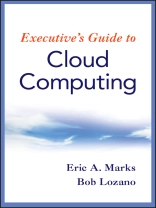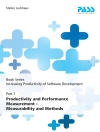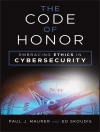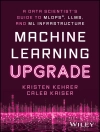Your organization can save and thrive in the cloud with this
first non-technical guide to cloud computing for business
leaders
In less than a decade Google, Amazon, and Salesforce.com went
from unknown ideas to powerhouse fixtures in the economic
landscape; in even less time offerings such as Linkedin, Youtube,
Facebook, Twitter and many others also carved out important roles;
in less than five years Apple’s i Tunes became the largest music
retailer in North America.
They all share one key strategic decision – each of these
organizations chose to harness the power of cloud computing to
power their drives to dominance. With roots in supercomputing and
many other technical disciplines, cloud computing is ushering in an
entirely new economic reality – technology-enabled
enterprises built on low cost, flexible, and limitless technical
infrastructures.
The Executive’s Guide to Cloud Computing reveals how you
can apply the power of cloud computing throughout your enterprise,
giving members of the C-suite a detailed look at:
* Why cloud computing must be a top priority on your company’s IT
roadmaps
* How the drive for scale, lower costs and greater agility is
making cloud computing a fiscal and technological imperative
* The relationship between cloud computing and other relevant IT
initiatives
* The strategic implications of cloud computing for the
enterprise
* Where to begin and how to get started integrating cloud
computing into your existing operations
Now you can harness cloud computing’s potential for your
organization. Executive’s Guide to Cloud Computing shows you
how.
Tabella dei contenuti
Preface xi
CHAPTER 1 THE SOUND OF INEVITABILITY 1
A Persistent Vision 5
A Little History 6
Three Ages of Computing 6
Broad Enablers 15
Big Contributions 20
Limitations 21
I Want One of Those 22
Back to the Future? 22
Notes 23
CHAPTER 2 CONCEPTS, TERMINOLOGY, AND STANDARDS 25
Basic Concepts: The Big Stuff 27
Major Layers 34
Where They Live (Deployment Models) 36
Geographic Location 39
Datacenter Innovation 39
The Quest for Green 40
Standards 41
Much Sound and Fury . . . 42
Parting Thoughts 42
Notes 43
CHAPTER 3 CLOUD COMPUTING AND EVERYTHING ELSE 45
The Neighborhood 45
Parting Thoughts 66
Notes 67
CHAPTER 4 STRATEGIC IMPLICATIONS OF CLOUD COMPUTING 69
A Survey of Cloud Implications 70
Business Benefits of Cloud Computing 78
Cloud-Based Business Models 82
Cloud-Enabled Business Models 83
Strategic Implications of Cloud Computing 86
Evolving from SOA into the Cloud 91
When to Do SOA versus Cloud? 98
Cloud Computing Adoption Obstacles 107
Parting Thoughts: Things to Do Tomorrow 109
Notes 110
CHAPTER 5 CLOUD ADOPTION LIFECYCLE 111
Cloud Adoption Lifecycle and Cloud Modeling Framework: Two Necessary Tools for Cloud Success 112
Cloud Adoption Lifecycle 114
Cloud Adoption Lifecycle Summary 144
Parting Thoughts 145
CHAPTER 6 CLOUD ARCHITECTURE, MODELING, AND DESIGN 147
Cloud Adoption Lifecycle Model: Role of Cloud Modeling and Architecture 147
Cloud Industry Standards 149
Standards Monitoring Framework 154
A Cloud Computing Reference Model 155
Exploring the Cloud Computing Logical Architecture 157
Developing a Holistic Cloud Computing Reference Model 162
Cloud Deployment Model 170
Cloud Governance and Operations Model 174
Cloud Ecosystem Model (Supporting the Cloud Reference Model) 179
Consumption of Cloud-Enabled and Cloud Enablement Resources 184
Cloud Computing Reference Model Summary 187
Cloud Computing Technical Reference Architecture 188
Parting Thoughts 192
Notes 193
CHAPTER 7 WHERE TO BEGIN WITH CLOUD COMPUTING 195
Cloud Adoption Lifecycle 195
Where to Begin with Cloud: Using the Cloud Adoption Lifecycle 199
Where to Begin with Cloud: Deployment Model Scenarios 200
Cloud Business Adoption Patterns 204
Where to Begin with Cloud: Consumers and Internal Cloud Providers 209
Cloud Patterns Mapped to Common Cloud Use Cases 213
Parting Thoughts 224
CHAPTER 8 ALL THINGS DATA 227
The Status Quo 228
Cracks in the Monolith 230
Cloud Scale 232
The Core Issues 234
Lessons Learned 237
Solutions and Technologies: A Few Examples 239
A Look Below: Need for Combined Computation/Storage 242
Parting Thoughts 243
Notes 243
CHAPTER 9 WHY INEVITABILITY IS INEVITABLE 245
Driving Scale 27
Objections and Concerns 248
Overwhelming Rationality 253
A Natural Evolution 257
Parting Thoughts 259
Notes 260
Appendix The Cloud Computing Vendor Landscape 263
Infrastructure as a Service (Iaa S) 264
Platforms as a Service (Paa S) 264
Software as a Service (Saa S) 265
Systems Integrators 265
Analysts and Services Providers 266
Parting Thoughts 266
Note 266
About the Authors 267
Index 269
Circa l’autore
ERIC A. MARKS is President and CEO of Agile Path Corporation, a Service-Oriented Architecture (SOA) and Web services solutions firm. He is focused on driving executive insight, strategy, and planning, and business execution of Web services and SOA. A software and technology services veteran with seventeen years of experience with firms including Pricewaterhouse Coopers, Cambridge Technology Partners, Novell, Electronic Data Systems, Stream Serve, Ontos, and Square D Company/Schneider Electric, he serves on the Advisory Board of Directors for Logic Library, the leading software asset reuse firm, and lectures at Syracuse University’s nationally recognized School of Information Studies. He is a regular columnist for Computerworld online, Managing Automation magazine, and the industry portal www.Search Web Services.com.
ROBERTO (BOB) LOZANO is chief strategist and founder of Appistry, Inc., a leading provider of cloud application platforms. An experienced entrepreneur with a history of building successful companies, Lozano founded and led Paylin X, a leader in the payment solutions market. He has also held management and technology positions with Southwestern Bell (now AT&T), Monsanto, and Sandia National Laboratories, has lectured on artificial intelligence as an adjunct faculty member at Washington University in St. Louis, and also founded Intelligent Computer Systems. He is a frequent speaker around the industry and blogs at www.thoughtsoncomputing.com.












